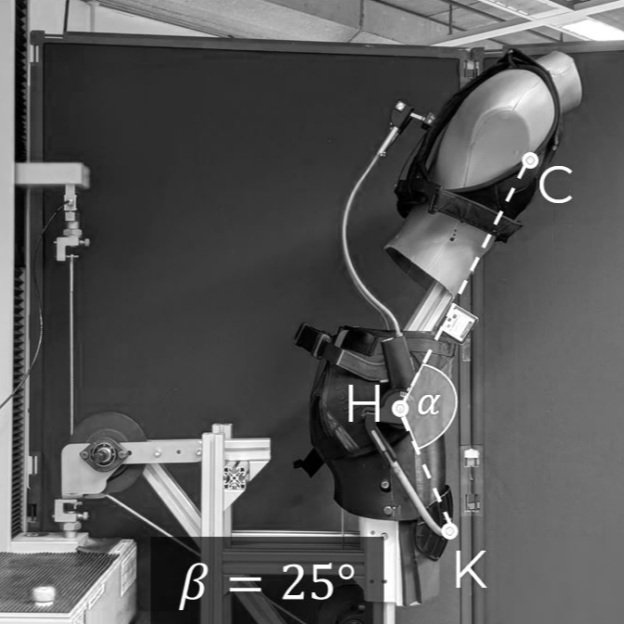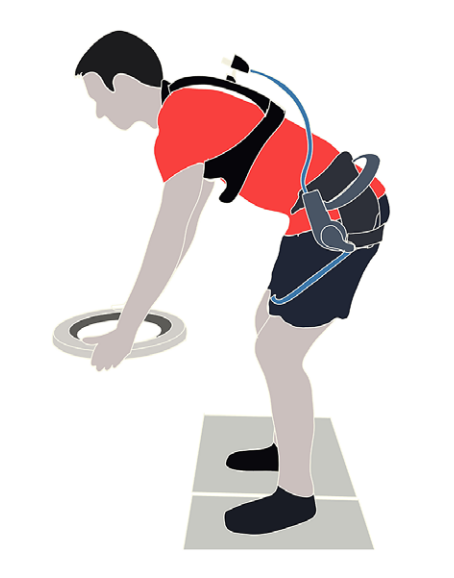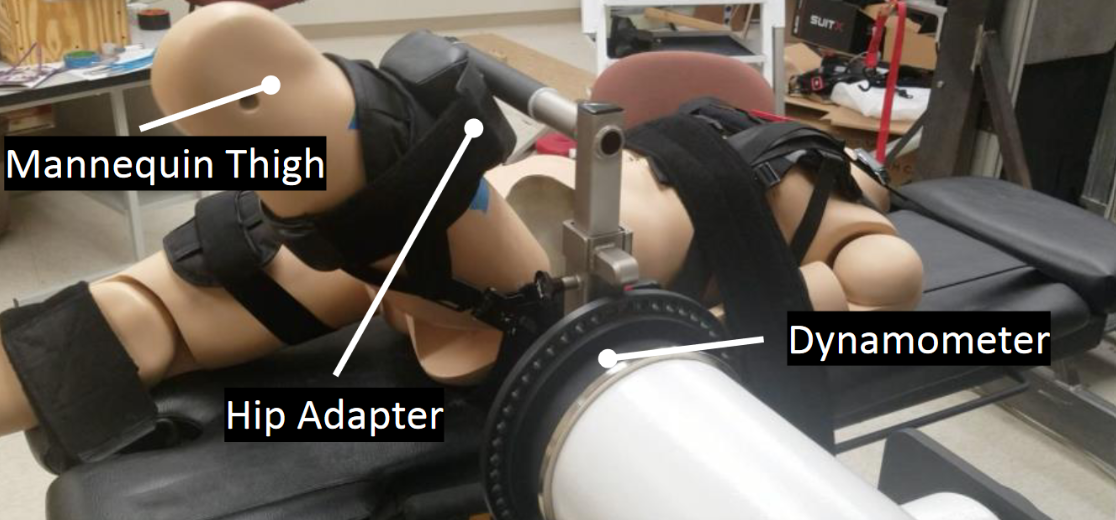Learning Center
Welcome to the Laevo Learning Center!
If you have any questions, remarks, or ideas on how to improve this page, contact us!
Specifying Exoskeleton Support
Exoskeletons are still a relatively new market, which is a reason why no standardization on (performance) specifications exists yet. Because of this, potential exoskeleton buyers are not well informed about the differences between available exoskeletons. The 3 pages below are for people who would like to know more about the differences in support and/or learn about exoskeletons in general.
Spine Compression
In this new series of Learning Center pages we will focus on the thing that is causing people to become unfit for work: Spine Compression. Understanding the issue is half of the work. Learn how exoskeletons are able to help out.
Whitepapers
Employees and interns of Laevo do a lot of research. We don't want to keep the findings to ourselves and intend to create more White Papers to share our knowledge.
2023 - Schnieders, harmelen, wagemaker - The effect of the Laevo FLEX exoskeleton on muscle activity and perceived exertion
In this study, the effect of the Laevo FLEX lower back exoskeleton on muscle activity and perceived exertion in static bent-forward postures is assessed. Special attention is given to the effects of different pelvic angles.
2022 - harmelen, Schnieders, wagemaker - Measuring the amount of support of a lower back exoskeleton
In this study, the torque-angle curves of the Laevo FLEX, Laevo V2.5 and other lower back exoskeletons are measured. Using the torque-angle curve, a simple, objective, and straightforward comparison of different exoskeletons is possible.
Scientific Papers
According to a study ‘Benchmarking occupational exoskeletons: An evidence mapping systematic review’ published in 2021, the Laevo Exoskeleton is the most researched trunk-supporting exoskeleton. A figure from this publication showing the number of publications found is shown below. This shows our long-term presence in the market and willingness to demonstrate what exoskeletons have to offer, but also have to improve on.
The distribution of the exoskeleton assessment types was illustrated across different exoskeletons. Back, shoulder and other exoskeletons were distinguished. First passive devices (P) were listed, followed by active exoskeletons (A). Unnamed exoskeletons were listed at the bottom. The distribution was expressed as the absolute number of occurrences. (S. de Bock et al. 2021)
Also, in a study named: ‘Passive Exoskeletons to Enhance Workforce Sustainability: Literature Review and Future Research Agenda', published in 2023, Laevo is on top of the list again.
Figure 7. Maturity level matrix related to the 54 papers focused on assessment study depicted in Figure 5. (Ashta et al. 2023)
Selected scientific papers
To provide some insight into the scientific research performed using Laevo exoskeletons, we have summarized a selection of papers below. Please click the title of the paper to check if you are eligible to read the full published version.
2024 - REFAI ET al. - Benchmarking commercially available soft and rigid passive back exoskeletons for an industrial workplace - Cambridge University Press
Several studies show the advantages of using rigid and soft back-support passive exoskeletons and exosuits to reduce the low-back loading and risk of injury. However, the benefits of using these exos have been shown to be task-specific. Therefore, in this study, we developed a benchmarking approach to assess exos for an industrial workplace. Two rigid and two soft exos were assessed for tasks resembling the workplace.
Overall, Laevo Flex offered a good balance between assistive moments, reductions in muscle activity, as well as user comfort and reductions in perceived exertion.
2023 – Moya-Esteban, et al. - Real-time lumbosacral joint loading estimation in exoskeleton-assisted lifting conditions via electromyography-driven musculoskeletal models - Journal of Biomechanics
This study assesses the effect of the Laevo FLEX on L5/S1 moment and compression force. The study uses a real-time electromyography (EMG)-driven musculoskeletal model, to estimate accurate lumbosacral (L5-S1) joint moments and compression forces.
For all participants and experimental conditions, the exoskeleton significantly reduced EMG activity for most recorded thoracolumbar muscles and significantly reduced L5/S1 joint flexion-extension moments and compression forces for all lifting conditions.
Reductions found in this study were larger during squat than stoop lifting. This may be explained by the fact that during squatting the thigh-torso angle was smaller, therefore, the exoskeleton delivered greater moments to the participants.
2023 - S. Madinei, M.A. Nussbaum - Estimating Lumbar Spine Loading When Using Back Support Exoskeletons in Lifting Tasks - Journal of Biomechanics
In 2020, Medinei et al. published about an assessment of the Laevo V2.5 during freestyle repetitive symmetric and asymmetric lifting tasks using EMG, finding 9% reductions in trunk extensor muscle activities with minimal changes in the behavior of the 18 participants.
In 2022, Medinei et al. measured the support torque profiles generated by the Laevo V2.5.
In this study, Medinei uses his results from 2020 and 2022 to estimate lumbar spine loading by a mathematical (musculoskeletal) model. The Laevo V2.5 reduced the axial (in spine direction) compression and the anteroposterior (back- and forward) shear in the spine by ~10% during the lowering phase. With the Laevo V2 during symmetric lifting, the mediolateral (sideways) shear in the spine was reduced by 24% during the lower phase and 30% during the lifting phase. The Laevo V2.5 reduced mediolateral (sideways) shear forces in the spine during asymmetric lifting by ~35%. The reductions are task-specific and depend on velocity and posture. Larger reductions can be expected with higher support.
2022 - Madinei, et al. - A Novel Approach to Quantify the Assistive Torque Profiles Generated by Passive Back Support Exoskeletons – Journal of Biomechanics
Medinei et al, measured the support torque profiles generated by the Laevo V2.5, with the goal to use the support torque profiles in a musculoskeletal model in a later study.
2021 – Luger et al. – Using a Back Exoskeleton During Industrial and Functional Tasks—Effects on Muscle Activity, Posture, Performance, Usability, and Wearer Discomfort in a Laboratory Trial – Human Factors
This article is a result of the project ‘Work physiological-biomechanical analysis of a passive exoskeleton to support occupational lifting and flexing processes’.
In this study, the effect of using the Laevo V2.56 on muscle activity, posture, heart rate, performance, usability and wearer comfort during three industrial tasks is investigated. The V2.56 decreased muscle activity of one of the main lumbar flexion muscles by 12% during pallet box lifting and 19% during a leaned forward fastening task. The muscle activity of one of the hamstring muscles was reduced by 36% during pallet box lifting and by 8% during a leaned forward fastening task. Increased muscle activity was found for another lumbar flexion muscle, knee flexion muscle and shoulder muscle. A possible explanation of this is that the exoskelet influenced the posture of the wearer. The V2.56 did not significantly influence heart rate. Slightly increased time-to-task-accomplishment and decreased comfort were found, probably because the participants had very limited time to get used to work with the exoskeleton.
2021 – Luger et al. – A passive back exoskeleton supporting symmetric and asymmetric lifting in stoop and squat posture reduces trunk and hip extensor activity and adjusts body posture – A laboratory study – Applied Ergonomics
This article is a result of the project ‘Work physiological-biomechanical analysis of a passive exoskeleton to support occupational lifting and flexing processes’.
In this study, the influence of the Laevo V2.56 on muscle activity, posture and heart rate was assessed during repetitive stoop and squat lifting. Using the V2.56 significantly and partially reduced median/peak activity of the lumbar muscle erector spinae (≤6%), the hamstring muscle biceps femoris (≤28%), abdominal muscle rectus abdominis (≤6%). Possibly because of the influence of the V2.56 on the posture during lifting and the limited time for participants to familiarize with the exoskeleton, increased muscle activity was found for the and increased median/peak activity of a thigh, upper back and knee muscle. The V2.56 significantly reduced the heart rate during the lifting task. The findings suggest that the V2.56 particularly supports hip extension and requires an adjusted body posture during lifting.
2020 - Madinei, et al. - Biomechanical assessment of two back-support exoskeletons in symmetric and asymmetric repetitive lifting with moderate postural demands – Applied Ergonomics
In this study, participants completed repetitive lifting tasks with and without Laevo V2.5. Muscle activity (EMG), energy expenditure (VO2/VCO2), kinematics (motion capturing) and subjective ratings (discomfort, exertion and usability) were measured.
No substantial changes in trunk or lumbar kinematics were observed when using the Laevo V2.5, which suggests that it did not substantially influenced lifting methods. The Laevo V2.5 reduced the muscle activity of the trunk extensor muscles by ~9%, but depends on the lifting phase. The Laevo V2.5 reduced the exertion rate by 8% on average. Ratings of perceived exertion were reduced by 33% in the lower back. Use of the Laevo V2.5 generally had positive impacts on subjective ratings.
2020 – Madinei, et al. - Biomechanical Evaluation of Passive Back-Support Exoskeletons in a Precision Manual Assembly Task: “Expected” Effects on Trunk Muscle Activity, Perceived Exertion, and Task Performance – Human Factors
This study assessed the efficacy of the Laevo V2.5 in terms of truck muscle activity (EMG), perceived low-back exertion and task performance. Participants performed a simulated manual assembly task that required static work. The Laevo V2.5 reduced the trunk muscle activity by max. 24%. Minimal effects on task completion times or ratings of perceived exertion were found.
2020 – Koopman et al. - Effects of a passive exoskeleton on the mechanical loading of the low-back during lifting – Journal of biomechanics
This study in the Journal of biomechanics is an elaborate lab study of dynamic movements with the Laevo V2.4 exoskeleton. The study shows approximately 9% reduction of compressive forces in the lumber spine. However, the bending motion that was researched (very deep stoop with fully extended legs) is not very realistic and higher percentage can be expected with other movements.
2019 – Koopman et al. - Effects of a passive exoskeleton on the mechanical loading of the low back in static holding tasks – Journal of Biomechanics
This study assessed the effect of the Laevo V2.4 on back and abdominal muscle activity, during static bending at five different hand heights. During the measurements, attention was paid to the posture of the participant (for example hip flexion), to be able to interpret the muscle activation results. Significant reductions (11-57%) in back muscle activity were found. The reductions are found to be variable across the participants. Based on the support torque and the total required torque, the exoskeleton is likely to reduce spine compression by about 20% in specific postures.
2018 – Motmans et al. - Effect of a Passive Exoskeleton on Muscle Activity and Posture During Order Picking - Proceedings of the 20th Congress of the International Ergonomics Association (IEA 2018)
This study investigated the effect of the Laevo V2.5 on muscle activity and posture during real life order picking tasks with professional order pickers. During order picking the back muscle activity was on average 10% lower when wearing the exoskeleton. There was no meaningful difference in the position of the back when the order pickers were wearing an exoskeleton or not. This study shows that even without changing the working posture an exoskeleton can have a beneficial impact on the lower back muscles. Subjectively the physical load was experienced positively with the exoskeleton and the operator had the feeling that they had to keep to back more straight because of the support on the chest. The order pickers mention that less energy was needed to lift a box, the weights felt lighter.
2018 - Baltrusch et al. - The effect of a passive trunk exoskeleton on functional performance in healthy individuals – Applied Ergonomics
This study assessed the Laevo V2.5. A significant decrease was found in perceived task difficulty and local discomfort in the back in static forward bending, but a significant increase of perceived difficulty in several other tasks, like walking, squatting and wide standing. Based on these results it can be concluded that the Laevo V2.5 has its most important application in working environments with stereotypical tasks, such as assembly work in a forward bent position, but has important limitations in environments that require more versatility.
Luckily, the Laevo FLEX offers a greater range of motion and thereby making it more suitable for dynamic work.
2016 – Bosch et.al. - The effects of a passive exoskeleton on muscle activity, discomfort and endurance time in forward bending work – Applied Ergonomics
This study published in Applied Ergonomics is one of the first published papers about the Laevo exoskeleton. It has actually been conducted with a Laevo V1 prototype. The lab study of a static posture holding task (with/without exoskeleton) show a reduction of 30-40% of muscle activity for the larger muscle groups in the lower back and a three times longer holding time (until exhaustion) of this posture with the exoskeleton.






















